The Intel Core i9-7980XE and Core i9-7960X CPU Review Part 1: Workstation
by Ian Cutress on September 25, 2017 3:01 AM ESTTest Bed and Setup
As per our processor testing policy, we take a premium category motherboard suitable for the socket, and equip the system with a suitable amount of memory running at the manufacturer's maximum supported frequency. This is also typically run at JEDEC subtimings where possible. It is noted that some users are not keen on this policy, stating that sometimes the maximum supported frequency is quite low, or faster memory is available at a similar price, or that the JEDEC speeds can be prohibitive for performance. While these comments make sense, ultimately very few users apply memory profiles (either XMP or other) as they require interaction with the BIOS, and most users will fall back on JEDEC supported speeds - this includes home users as well as industry who might want to shave off a cent or two from the cost or stay within the margins set by the manufacturer. Where possible, we will extend out testing to include faster memory modules either at the same time as the review or a later date.
| Test Setup | |
| Processor | Intel Core i9-7980XE (18C/36T, 165W, 2.6 GHz) Intel Core i9-7960X (16C/32T, 165W, 2.8 GHz) |
| Motherboards | GIGABYTE X299 Gaming 7 Pro |
| Cooling | Thermalright TRUE Copper |
| Power Supply | Corsair AX760i PSU Corsair AX1200i Platinum PSU |
| Memory | Corsair Vengeance Pro DDR4-2666 4x8 GB |
| Video Cards | MSI GTX 1080 Gaming 8GB ASUS GTX 1060 Strix Sapphire R9 Fury 4GB Sapphire RX 480 8GB Sapphire RX 460 2GB |
| Hard Drive | Crucial MX200 1TB |
| Optical Drive | LG GH22NS50 |
| Case | Open Test Bed |
| Operating System | Windows 10 Pro 64-bit |
Many thanks to...
We must thank the following companies for kindly providing hardware for our multiple test beds. Some of this hardware is not in this testbed specifically, but is used in other testing.
Thank you to Sapphire for providing us with several of their AMD GPUs. We met with Sapphire back at Computex 2016 and discussed a platform for our future testing on AMD GPUs with their hardware for several upcoming projects. As a result, they were able to sample us the latest silicon that AMD has to offer. At the top of the list was a pair of Sapphire Nitro R9 Fury 4GB GPUs, based on the first generation of HBM technology and AMD’s Fiji platform. As the first consumer GPU to use HDM, the R9 Fury is a key moment in graphics history, and these Nitro cards come with 3584 SPs running at 1050 MHz on the GPU with 4GB of 4096-bit HBM memory at 1000 MHz.
Further Reading: AnandTech’s Sapphire Nitro R9 Fury Review
Following the Fury, Sapphire also supplied a pair of their latest Nitro RX 480 8GB cards to represent AMD’s current performance silicon on 14nm (as of March 2017). The move to 14nm yielded significant power consumption improvements for AMD, which combined with the latest version of GCN helped bring the target of a VR-ready graphics card as close to $200 as possible. The Sapphire Nitro RX 480 8GB OC graphics card is designed to be a premium member of the RX 480 family, having a full set of 8GB of GDDR5 memory at 6 Gbps with 2304 SPs at 1208/1342 MHz engine clocks.
Further Reading: AnandTech’s AMD RX 480 Review
With the R9 Fury and RX 480 assigned to our gaming tests, Sapphire also passed on a pair of RX 460s to be used as our CPU testing cards. The amount of GPU power available can have a direct effect on CPU performance, especially if the CPU has to spend all its time dealing with the GPU display. The RX 460 is a nice card to have here, as it is powerful yet low on power consumption and does not require any additional power connectors. The Sapphire Nitro RX 460 2GB still follows on from the Nitro philosophy, and in this case is designed to provide power at a low price point. Its 896 SPs run at 1090/1216 MHz frequencies, and it is paired with 2GB of GDDR5 at an effective 7000 MHz.
We must also say thank you to MSI for providing us with their GTX 1080 Gaming X 8GB GPUs. Despite the size of AnandTech, securing high-end graphics cards for CPU gaming tests is rather difficult. MSI stepped up to the plate in good fashion and high spirits with a pair of their high-end graphics. The MSI GTX 1080 Gaming X 8GB graphics card is their premium air cooled product, sitting below the water cooled Seahawk but above the Aero and Armor versions. The card is large with twin Torx fans, a custom PCB design, Zero-Frozr technology, enhanced PWM and a big backplate to assist with cooling. The card uses a GP104-400 silicon die from a 16nm TSMC process, contains 2560 CUDA cores, and can run up to 1847 MHz in OC mode (or 1607-1733 MHz in Silent mode). The memory interface is 8GB of GDDR5X, running at 10010 MHz. For a good amount of time, the GTX 1080 was the card at the king of the hill.
Further Reading: AnandTech’s NVIDIA GTX 1080 Founders Edition Review
Thank you to ASUS for providing us with their GTX 1060 6GB Strix GPU. To complete the high/low cases for both AMD and NVIDIA GPUs, we looked towards the GTX 1060 6GB cards to balance price and performance while giving a hefty crack at >1080p gaming in a single graphics card. ASUS lended a hand here, supplying a Strix variant of the GTX 1060. This card is even longer than our GTX 1080, with three fans and LEDs crammed under the hood. STRIX is now ASUS’ lower cost gaming brand behind ROG, and the Strix 1060 sits at nearly half a 1080, with 1280 CUDA cores but running at 1506 MHz base frequency up to 1746 MHz in OC mode. The 6 GB of GDDR5 runs at a healthy 8008 MHz across a 192-bit memory interface.
Further Reading: AnandTech’s ASUS GTX 1060 6GB STRIX Review
Thank you to Crucial for providing us with MX200 SSDs. Crucial stepped up to the plate as our benchmark list grows larger with newer benchmarks and titles, and the 1TB MX200 units are strong performers. Based on Marvell's 88SS9189 controller and using Micron's 16nm 128Gbit MLC flash, these are 7mm high, 2.5-inch drives rated for 100K random read IOPs and 555/500 MB/s sequential read and write speeds. The 1TB models we are using here support TCG Opal 2.0 and IEEE-1667 (eDrive) encryption and have a 320TB rated endurance with a three-year warranty.
Further Reading: AnandTech's Crucial MX200 (250 GB, 500 GB & 1TB) Review
Thank you to Corsair for providing us with an AX1200i PSU. The AX1200i was the first power supply to offer digital control and management via Corsair's Link system, but under the hood it commands a 1200W rating at 50C with 80 PLUS Platinum certification. This allows for a minimum 89-92% efficiency at 115V and 90-94% at 230V. The AX1200i is completely modular, running the larger 200mm design, with a dual ball bearing 140mm fan to assist high-performance use. The AX1200i is designed to be a workhorse, with up to 8 PCIe connectors for suitable four-way GPU setups. The AX1200i also comes with a Zero RPM mode for the fan, which due to the design allows the fan to be switched off when the power supply is under 30% load.
Further Reading: AnandTech's Corsair AX1500i Power Supply Review
Thank you to G.Skill for providing us with memory. G.Skill has been a long-time supporter of AnandTech over the years, for testing beyond our CPU and motherboard memory reviews. We've reported on their high capacity and high-frequency kits, and every year at Computex G.Skill holds a world overclocking tournament with liquid nitrogen right on the show floor.
Further Reading: AnandTech's Memory Scaling on Haswell Review, with G.Skill DDR3-3000


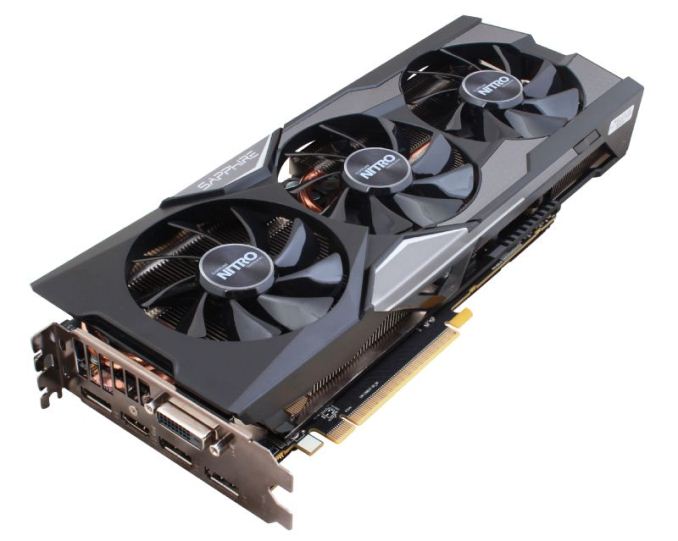
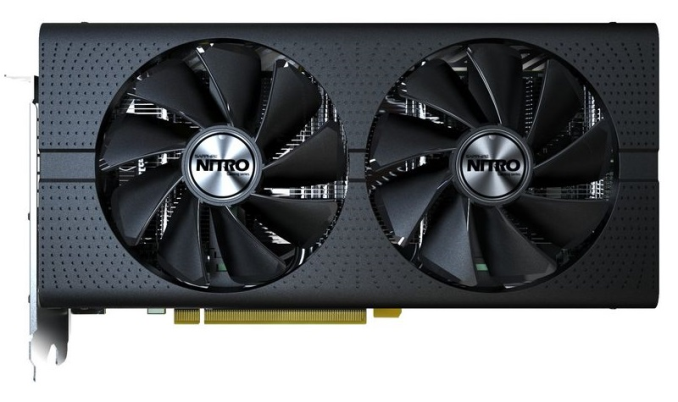
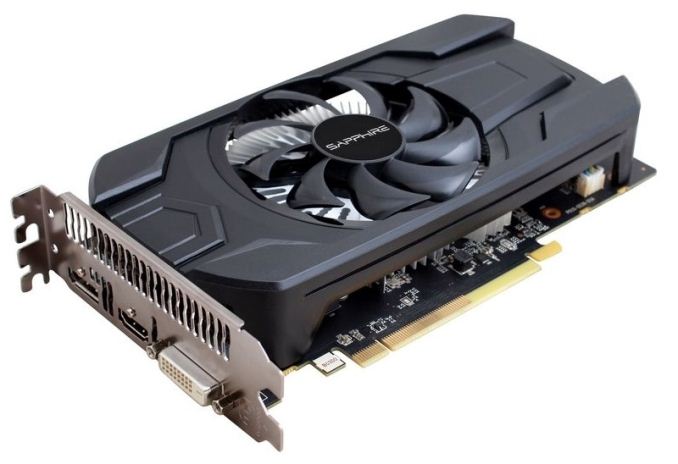

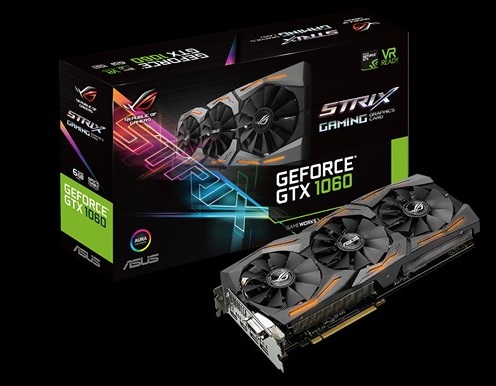
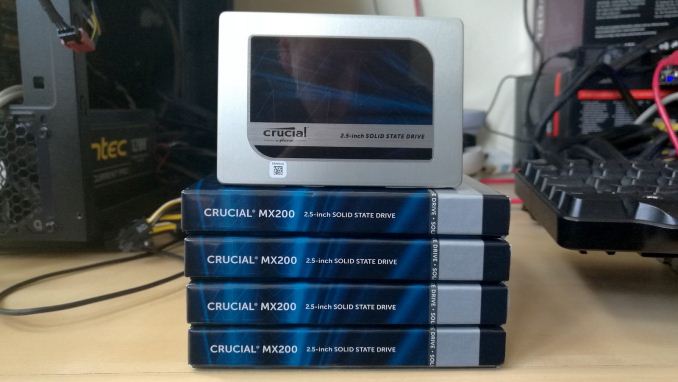
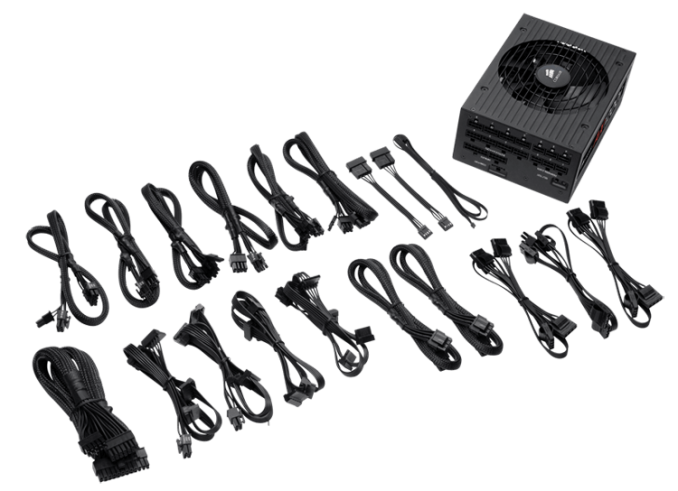
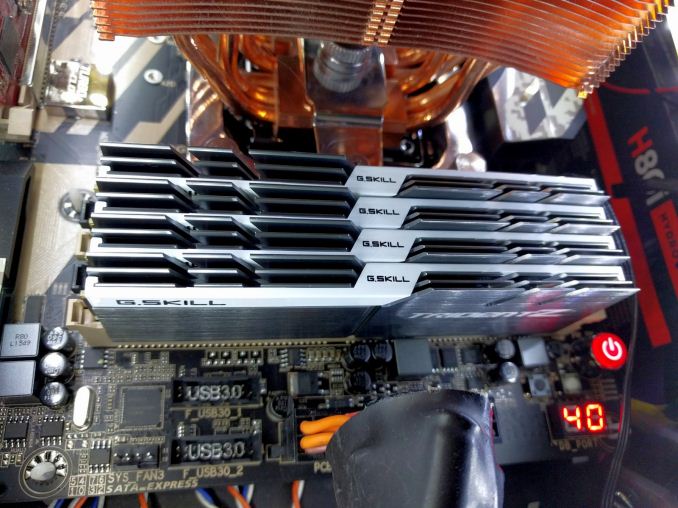








152 Comments
View All Comments
mmrezaie - Monday, September 25, 2017 - link
unofficially threadripper supports ECC. Do you have the plan to look into it?p.s. I sent an email to Anandtech support about abusive ads directing to some questionable websites. I am in EU and I see these ads for a long time now.
Ryan Smith - Monday, September 25, 2017 - link
"p.s. I sent an email to Anandtech support about abusive ads directing to some questionable websites. I am in EU and I see these ads for a long time now."Er, we don't have a support email address. So I'm not sure who you sent that to.
Anyhow, we're always trying to squash malvertising. It comes in on programmatic ads, which does make the process tricky. But if you can get it to reliably and repeatedly trigger, please contact me. If we can get network logs collected, then we can isolate the source and get said ads pulled.
mmrezaie - Monday, September 25, 2017 - link
I sent it to advertisement link I found in the "contact us" page. Sorry by saying support. That's what we call it in our organization. thanks for the reply.snowmyr - Monday, September 25, 2017 - link
Check that link again and you'll see that it's not really an anandtech email address and might not get forwarded to the right people.mmrezaie - Monday, September 25, 2017 - link
I sent it to advertisement link I found in the "contact us" page. Sorry by saying support. That's what we call it in our organization. thanks for the reply.AdditionalPylons - Monday, September 25, 2017 - link
Just sent you a tweet with a screenshot, Ryan. I've been very annoyed with these clickbait ads for avery long time as well.
hughc - Monday, September 25, 2017 - link
Wasn't sure what you were referring to. I have AdBlock whitelisting the domain, so I see all the display advertising.I'm also using ClickbaitKiller. Disabled it, and now I can see the unit in question - very happy to hide this trash.
thesavvymage - Monday, September 25, 2017 - link
I get inappropriate ads as well. I'm not sure where I can send a screenshot, but the one I have on this page under the article is "This Is Better Than Adderall, According to US College Students. Try It!"Like what? This is a professional tech site and ads like that have no business being on here. Banner ads for tech companies? Good. Side ads for relevant products? Good. This BS thats always underneath every article? Absolutely unacceptable.
Gothmoth - Monday, September 25, 2017 - link
do you really think anandtech cares how they make money.. maybe when anad was still here.i see these ads too, a website who cares about it´s reputation would distance itself from such crap.. but not anandtech.
ddriver - Monday, September 25, 2017 - link
"maybe when anad was still here" LOL, if he didn't care about money, he'd not sell the site to money makers for money. That's the N1 business model, and the sole motivation for doing anything - get it to get popular, then sell it out, and all its users with it.